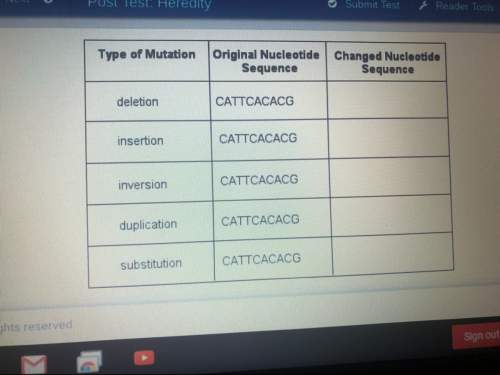
Biology, 09.12.2019 19:31, oliviaclerk5
The reversible interconversion reactions of the pentose phosphate pathway can operate either to convert pentoses to hexoses (when operating in an oxidative mode to generate nadph) or to convert hexoses to pentoses (when operating in a non-oxidative mode to generate pentoses for nucleic acid synthesis). two key enzymes in these interconversion reactions are transaldolase and transketolase, and a key intermediate is the seven-carbon sugar sedoheptulose-7-phosphate. identify the products formed from sedoheptulose-7-phosphate and glyceraldehyde-3-phosphate with each of these enzymes.

Answers: 1
Other questions on the subject: Biology

Biology, 21.06.2019 19:30, keving4three
1. the is the thinnest part of the earth. 2. the is the thickest part of the earth. 3. what metals are mentioned in the text?
Answers: 1

Biology, 22.06.2019 00:40, cselder
There is a liquid capsule inside a cup full of liquid. the cup full of liquid has salt in it and the liquid capsule has no salt in it. in which direction will the solvent flow? a. the salt does not have to move b. from the capsule to the larger cup c. equally between the capsule and the cup d. from the larger cup to the capsule
Answers: 1

Biology, 22.06.2019 12:30, MikeCrotch19251
Are the layers of rock above and below the coal older or younger?
Answers: 1
Do you know the correct answer?
The reversible interconversion reactions of the pentose phosphate pathway can operate either to conv...
Questions in other subjects:



Biology, 16.12.2020 20:40




Chemistry, 16.12.2020 20:40


History, 16.12.2020 20:40







